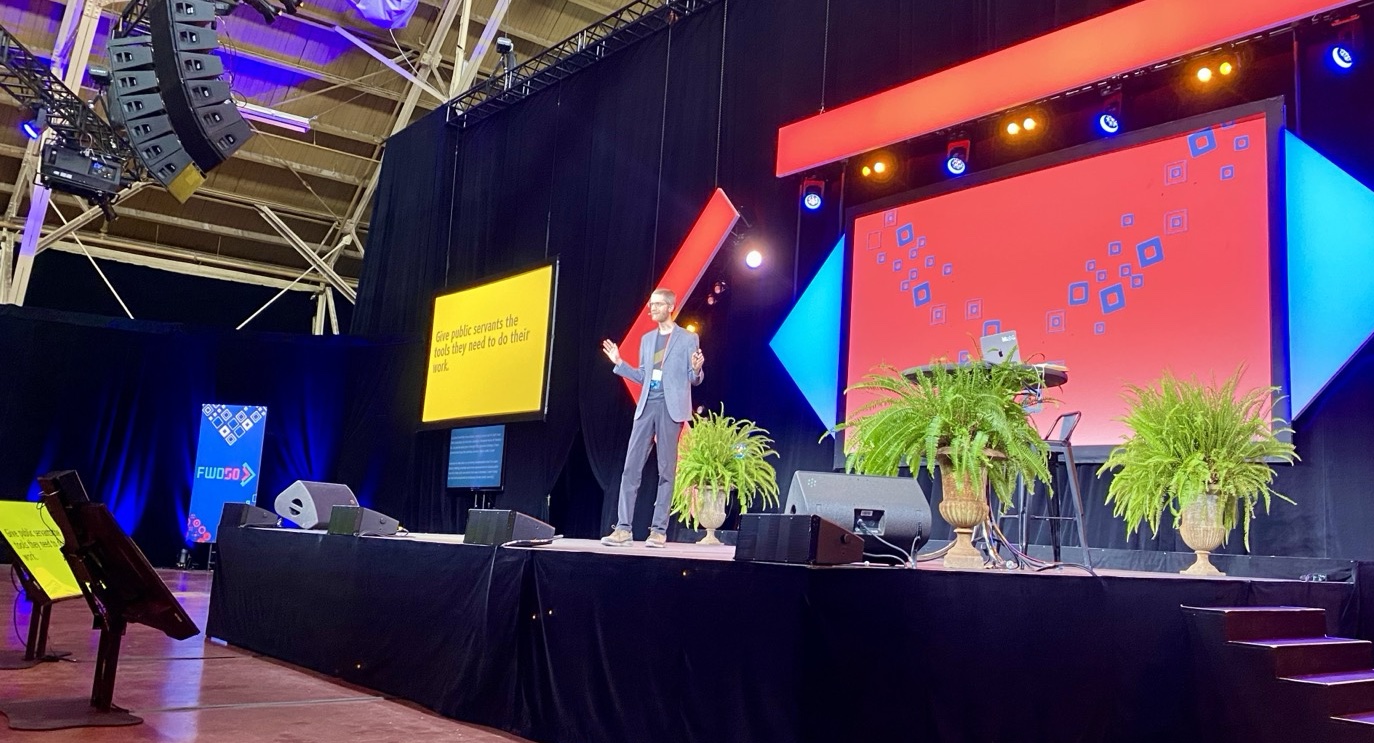Revolution, not evolution, for federal public service delivery
A presentation at FWD50 2023
This morning I gave a keynote presentation at FWD50, Canada’s leading digital government conference. It’s a really wonderful community and I’m really grateful for the chance to speak there.
My talk was titled Revolution, not evolution, for federal public service delivery and you can watch it on the FWD50 YouTube channel or see my slides here. In the presentation I talked about how Canada needs a revolution in how we operate as a public service – not just when it comes to technology work in government, but there in particular, too.
Martha Lane Fox’s 2010 report, Directgov 2010 and beyond: revolution not evolution was the main inspiration. 13 years later, it still rings true. Her report kickstarted a whole set of downstream changes: the creation of the UK Government Digital Service, the building of GOV.UK, and radical changes to how the UK built and delivered digital services, implemented IT spending controls, broke away from large established IT vendors, created digital service standards, and more.
As I spoke about in my presentation, here in Canada, we often tried to do surface-level versions of these same changes (migrating departmental websites to Canada.ca, for example), without having the courage to do the actual revolutionary parts.
Why does this matter? Because ”state capacity“ – or the lack of it – is an urgent and growing concern in Canada. We’re suddenly realizing that we need public service institutions to work well when it comes to challenges like pandemics, or housing affordability, or climate change and wildfires, or infrastructure, or complicated geopolitical situations around the world.
(Reflections over the past year from Paul Wells, Brian Kelcey, and Andrew Coyne illustrate this issue well.)

Too often, our public service organizations aren’t ready for those challenges. We’re too slow, too traditional, too timid and risk-averse. We’ve doubled down on processes instead of creativity, on committees (and more committees) instead of empowering and trusting front-line public servants and experts that are closest to the problems we’re trying to solve. More importantly, our public service structures and organizational culture make it almost impossible to change things from the inside.
That’s partly why we have this recent tradition of people retiring as Clerks of the Privy Council Office – the position at the very top of the Canadian federal public service – and only after that, pointing out all the things that the public service should do differently. It’s an indication that the status quo (and the structures that reinforce it) are too heavily established, a classic “Coasian heck”.
Sharing radical ideas for change – most of the last half of my FWD50 presentation! – is an example of how to respond to Coasian hecks. Changing the “Overton window” of what we think is possible, and increasing the public pressure (and perhaps, multi-partisan political pressure) to improve how the public service works.
It’s easier, of course, to do this now that I’ve left the federal public service and work for a territorial government (which of course means, I can’t be too critical of the departing Clerks, whose ideas for change are good ones!).
But my goal throughout is always: I want the public service to be excellent. I want us to deliver services to the public that are actually good. I want us to stop doing massive IT projects that don’t actually help people. I want public servants to be proud of what we do. I want us to be proud of the tools and tech that we use, instead of embarrassed by it. I want us to be proud of our public service leaders, and I want them to lead us with courage and trust.
And I have a bunch of ideas on things to change! They’re radical, but not that radical. Here they are.